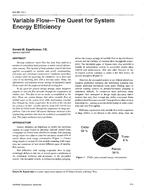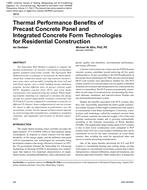Natural night ventilation is an interesting passive cooling method in moderate climates. Driven by wind and stack generated pressures, it cools down the exposed building structure at night, in which the heat of the previous day is accumulated. Building simulation can predict the performances of this cooling technique. Nevertheless, the reliability of these results depends on the accuracy of the input data. Two practical guidelines are developed to ensure a reliable design using building simulation. First, the combination of a normal and extremely warm weather data is advised. Second, evaluating the uncertainty interval instead of one single value is recommended. These guidelines are derived from a general methodology to evaluate the design of natural night ventilation using building simulation to consider the uncertainties in the input. The importance of these guidelines is shown in the evaluation of the reliability of the design of natural night ventilation in the “Sint-Pietersnieuwstraat†office building (Belgium). An acceptable average thermal comfort level can be noticed in normal weather conditions. However, a large variation in thermal comfort is observed and the criteria for good thermal comfort are not met in extremely warm weather. The design of natural night ventilation cannot ensure reliable thermal comfort in this office building.
Presented at Thermal Performance of Exterior Envelopes of Whole Buildings X – December 2007
Units: SI
Citation: Thermal Performance of Exterior Envelopes of Whole Buildings X
Product Details
- Published:
- 2008
- Number of Pages:
- 14
- File Size:
- 1 file , 3.1 MB
- Product Code(s):
- D-BldgsX186


